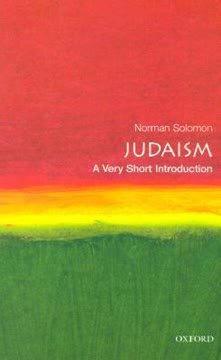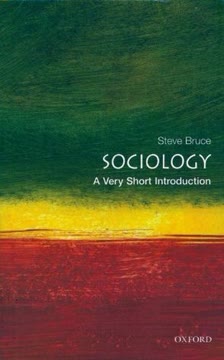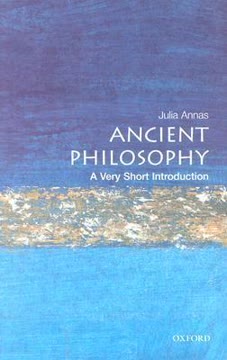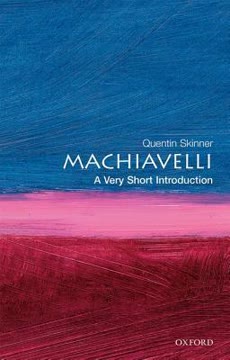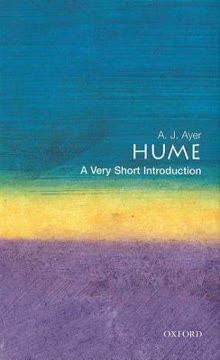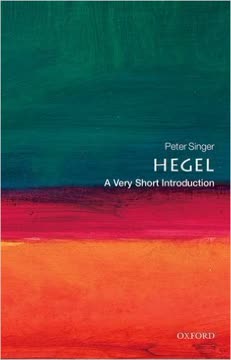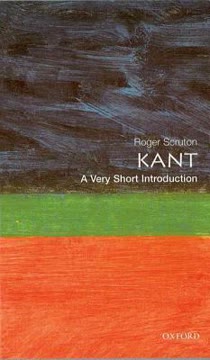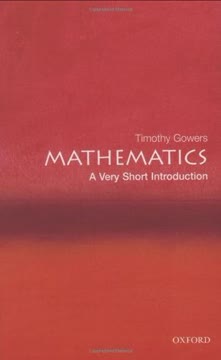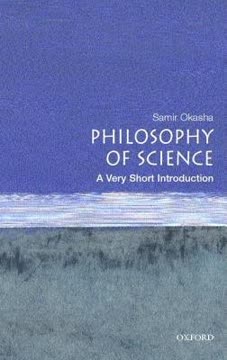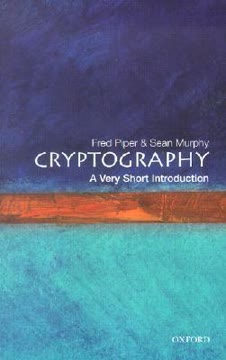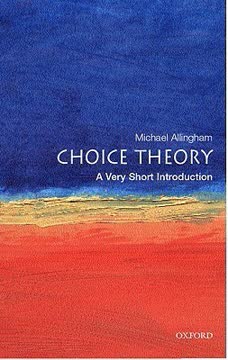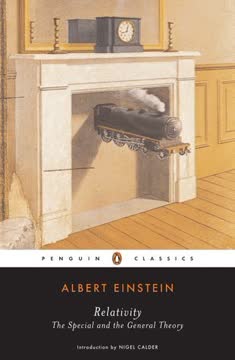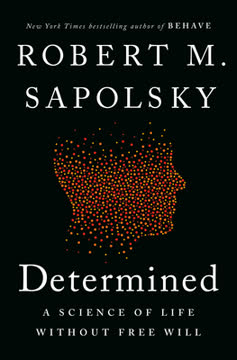Key Takeaways
1. Apziņa: Subjektīvās pieredzes galīgā mistērija
Kā gan elektriskā aktivitāte miljoniem sīku smadzeņu šūnu var radīt šo – manu privāto, subjektīvo, apzināto pieredzi?
Grūtā problēma. Apziņa ir visredzamākais, tomēr mulsinošākais cilvēka pieredzes aspekts. Tā ietver subjektīvos, kvalitatīvos mūsu garīgās dzīves aspektus – "kā tas ir" redzēt krāsas, sajust emocijas vai domāt domas. Šī parādība ir mulsinājusi filozofus un zinātniekus gadsimtiem ilgi, kas noveda pie "grūtās problēmas" formulēšanas apziņas jomā: kā fiziskie procesi smadzenēs var radīt subjektīvas pieredzes?
Teorijas un pieejas. Dažādas teorijas mēģina izskaidrot apziņu:
- Dualisms: Prāts un ķermenis ir atsevišķas vielas
- Materiālisms: Apziņa rodas no fiziskiem smadzeņu procesiem
- Panpsihisms: Apziņa ir fundamentāla Visuma īpašība
- Iluzionisms: Apziņa, kā mēs to uztveram, ir ilūzija
Neskatoties uz intensīviem pētījumiem un debatēm, neviena teorija nav guvusi plašu pieņemšanu, izceļot dziļo izaicinājumu, ko apziņa rada mūsu izpratnei par realitāti un sevi.
2. Smadzeņu loma apziņā: Sarežģīti neirālie procesi
Smadzenēs notiek daudzi procesi paralēli, koordinējot uztveres un domas, un kontrolējot mūsu uzvedību.
Apziņas neirālie korelāti. Neirozinātne ir guvusi ievērojamus panākumus, identificējot smadzeņu reģionus un procesus, kas saistīti ar apzinātām pieredzēm. Galvenie atklājumi ietver:
- Talamusa un garozas lomu apzinātas apziņas radīšanā
- Specifiskus neirālos modeļus, kas saistīti ar dažādiem apziņas stāvokļiem
- Informācijas integrācijas nozīmi starp smadzeņu reģioniem
Izaicinājumi smadzeņu-apziņas saiknē. Tomēr vairāki jautājumi sarežģī mūsu izpratni:
- Smadzeņu apstrādes izkliedētā daba
- Centrālā "apziņas centra" trūkums smadzenēs
- Grūtības izskaidrot, kā neirālā aktivitāte pārvēršas subjektīvā pieredzē
Šie izaicinājumi izceļ nepieciešamību pēc jauniem konceptuāliem ietvariem un eksperimentālām pieejām, lai pārvarētu plaisu starp smadzeņu aktivitāti un apzināto pieredzi.
3. Laiks un telpa apziņā: Izaicinot mūsu uztveres
Neviens vēl nav spējis pārvarēt bezdibeņa dziļumu, lielo plaisu vai izskaidrojošo plaisu starp iekšējo un ārējo, prātu un smadzenēm, vai subjektīvo un objektīvo.
Laika uztveres anomālijas. Mūsu subjektīvā laika pieredze bieži atšķiras no objektīviem mērījumiem, atklājot intriģējošus apziņas aspektus:
- Libeta eksperimenti par apzinātu lēmumu laiku
- Acīmredzamā atpalicība starp neirālo aktivitāti un apzināto apziņu
- Apzināto pieredžu "atpakaļejoša atsauce" laikā
Telpiskie apziņas aspekti. Mūsu telpas uztvere un ķermeņa pozīcija tajā var tikt manipulēta:
- Ārpus ķermeņa pieredzes un to neiroloģiskais pamats
- Gumijas rokas ilūzija un ķermeņa īpašumtiesības
- Telpiskā neievērošana smadzeņu bojājumu pacientiem
Šīs parādības izaicina mūsu intuitīvās idejas par to, kā apziņa saistās ar laiku un telpu, liekot domāt, ka mūsu subjektīvās pieredzes var būt sarežģīti konstruētas smadzenēs.
4. Lielā ilūzija: Pārdomājot vizuālo apziņu
Izmaiņu un neuzmanības akluma atklājumi izaicina veidu, kā lielākā daļa no mums dabiski šķiet domājam par savām vizuālajām pieredzēm.
Izmaiņu aklums. Eksperimenti atklāj mūsu pārsteidzošo nespēju pamanīt lielas izmaiņas vizuālajās ainās, izaicinot ideju, ka mēs uzturam detalizētu, nepārtrauktu mūsu vizuālās pasaules attēlojumu.
Neuzmanības aklums. Mēs bieži nespējam pamanīt negaidītus objektus vai notikumus, kad mūsu uzmanība ir vērsta citur, pat ja tie ir acīmredzami.
Ietekme uz apziņu. Šīs parādības liecina, ka mūsu vizuālā apziņa var būt daudz ierobežotāka un konstruēta, nekā mēs intuitīvi ticam:
- Mūsu uztvere par bagātu, detalizētu vizuālo pasauli var būt ilūzija
- Apziņa var ietvert ierobežotu, uzdevumam atbilstošu attēlojumu dinamisku radīšanu
- Uzmanība spēlē izšķirošu lomu, nosakot, kas nonāk mūsu apzinātajā apziņā
Šie atklājumi ir dziļi ietekmīgi mūsu izpratnei par apziņu un uztveri, liekot domāt, ka mūsu subjektīvā pieredze var būt ļoti filtrēta un konstruēta realitātes versija.
5. Neizprotams es: Izpētot identitātes dabu
Saišķa teorija apgriež problēmu otrādi, padarot skatītāju par aktieri un vīzijas par darbībām.
Izaicinājumi vienotajam es. Dažādas parādības un eksperimenti izaicina mūsu intuitīvo sajūtu par vienotu, nepārtrauktu es:
- Sadalīto smadzeņu pacienti un vairāki apziņas stāvokļi
- Disociatīvā identitātes traucējuma un vairāku personību gadījumi
- Budistu koncepcijas par ne-es un pastāvīgas identitātes ilūziju
Es teorijas. Dažādas pieejas mēģina izskaidrot mūsu es sajūtu:
- Ego teorijas: Pieņem reālu, pastāvīgu es
- Saišķa teorijas: Uztver es kā pieredžu kolekciju bez centrālas vienības
- Narācijas teorijas: Redz es kā stāstu, ko mēs konstruējam un stāstām sev
Šie skatījumi liek mums pārdomāt personiskās identitātes dabu un tās attiecības ar apziņu, liekot domāt, ka mūsu es sajūta var būt daudz plūstošāka un konstruēta, nekā mēs parasti pieņemam.
6. Brīvā griba: Apšaubot mūsu apzināto kontroli
Denets apgalvo, ka Karteziāniskais teātris neeksistē.
Izaicinājumi brīvajai gribai. Zinātniskie atklājumi un filozofiskie argumenti ir apšaubījuši mūsu tradicionālo brīvās gribas izpratni:
- Libeta eksperimenti par apzinātu lēmumu laiku
- Neapzināto procesu ietekme uz mūsu izvēlēm
- Problēma saskaņot brīvo gribu ar determinismu vai nejaušību
Ietekme un alternatīvas. Šie izaicinājumi ir noveduši pie dažādiem skatījumiem uz brīvo gribu un atbildību:
- Saderīgums: Pārdefinējot brīvo gribu veidos, kas saderīgi ar determinismu
- Stingrs nesaderīgums: Noliegt brīvās gribas iespējamību
- Iluzionisms: Uztverot mūsu brīvās gribas sajūtu kā noderīgu fikciju
Šīs debates ir dziļi ietekmīgas mūsu izpratnei par apziņu, morāli un personisko atbildību, liekot mums pārdomāt cilvēka aģentūras un lēmumu pieņemšanas dabu.
7. Mainīti stāvokļi: Paplašinot mūsu izpratni par apziņu
Kanabiss satur vairāk nekā sešdesmit citus kanabinoīdus un daudzus citus komponentus, kas nedaudz atšķirīgi ietekmē smadzenes un imūnsistēmu, un var arī mijiedarboties savā starpā.
Daudzveidīgi mainīti stāvokļi. Plašs pieredžu klāsts var mainīt mūsu normālo apziņas stāvokli:
- Psihoaktīvās vielas (piemēram, psihodēliskie līdzekļi, kanabiss, anestēzijas līdzekļi)
- Meditācija un kontemplatīvās prakses
- Miegs un sapņi
- Nāves tuvuma pieredzes un ārpus ķermeņa pieredzes
Ieskati no mainītiem stāvokļiem. Šo parādību izpēte var sniegt vērtīgus ieskatus apziņā:
- Mūsu uztveres un es sajūtas mainīgums
- Dažādu smadzeņu sistēmu loma apzinātu pieredžu radīšanā
- Potenciāls paplašinātām vai alternatīvām apziņas formām
Pētījumi par mainītiem stāvokļiem izaicina mūsu pieņēmumus par apziņas dabu un robežām, liekot domāt, ka mūsu normālais nomoda stāvoklis var būt tikai viena no daudzām iespējamām apziņas formām.
8. Apziņas evolūcija: Neatrisināti jautājumi
Vai apziņa ir adaptācija? Varētu šķist, ka tai jābūt, jo nepiemērotas īpašības drīz tiek izskaustas ar atlasi, bet ir divas citas galvenās iespējas: apziņa varētu būt bezjēdzīgs blakusprodukts, vai arī tā varētu būt neatdalāma sastāvdaļa kaut kam citam, kas ir adaptīvs (pat ja tas nešķiet tāds).
Evolucionārie skatījumi. Dažādas teorijas piedāvā dažādus apziņas izcelsmes un funkciju skaidrojumus:
- Kā adaptācija sociālajai izziņai un prāta teorijai
- Kā citu kognitīvo spēju blakusprodukts
- Kā sarežģītas informācijas apstrādes neatņemama sastāvdaļa
Izaicinājumi apziņas evolūcijas izpētē. Vairāki faktori sarežģī mūsu izpratni par to, kā apziņa attīstījās:
- Grūtības definēt un mērīt apziņu dažādās sugās
- Fosiliju pierādījumu trūkums subjektīvām pieredzēm
- Izaicinājums atšķirt apzinātus un neapzinātus procesus dzīvniekos
Šie neatrisinātie jautājumi izceļ nepieciešamību pēc starpdisciplinārām pieejām, apvienojot neirozinātni, psiholoģiju, filozofiju un evolucionāro bioloģiju, lai atšķetinātu apziņas mistēriju un tās vietu dabas pasaulē.
Last updated:
FAQ
What's "Consciousness: A Very Short Introduction" about?
- Overview of Consciousness: The book provides a concise exploration of consciousness, addressing its complexities and the challenges it presents to philosophers and scientists.
- Historical Context: It delves into the historical struggle to understand consciousness, highlighting how it has been a topic of debate for millennia.
- Modern Approaches: The book discusses contemporary studies in psychology, biology, and neuroscience that attempt to tackle the "hard problem" of consciousness.
- Philosophical Perspectives: It examines various philosophical theories, including dualism and materialism, and their implications for understanding consciousness.
Why should I read "Consciousness: A Very Short Introduction"?
- Expert Insight: Written by Susan Blackmore, an expert in the field, the book offers authoritative insights into the study of consciousness.
- Accessible Introduction: It serves as an accessible entry point for anyone interested in the complex subject of consciousness, without requiring prior knowledge.
- Broad Coverage: The book covers a wide range of topics, from the nature of self and free will to altered states of consciousness and the evolution of consciousness.
- Stimulating Content: It challenges readers to think critically about their own experiences and the nature of consciousness itself.
What are the key takeaways of "Consciousness: A Very Short Introduction"?
- The Hard Problem: Consciousness is a deeply complex issue, with the "hard problem" being how subjective experiences arise from physical brain processes.
- Illusion of Self: The book suggests that the self may be an illusion, a concept that challenges traditional views of identity and consciousness.
- Consciousness and Evolution: It explores whether consciousness is an evolutionary adaptation or a byproduct of other cognitive processes.
- Role of Consciousness: The book questions the role of consciousness in decision-making and whether free will is an illusion.
What is the "hard problem" of consciousness as discussed in the book?
- Definition: The "hard problem," coined by philosopher David Chalmers, refers to the challenge of explaining how subjective experiences arise from physical brain processes.
- Subjectivity: It emphasizes the difficulty in understanding how objective brain functions translate into personal, subjective experiences.
- Philosophical Debate: The problem has led to various philosophical theories, including dualism and materialism, each attempting to address this gap.
- Ongoing Mystery: Despite advances in neuroscience, the hard problem remains unsolved, highlighting the complexity of consciousness.
How does Susan Blackmore address the concept of self in the book?
- Illusion of Self: Blackmore suggests that the self is an illusion, a temporary construct rather than a persistent entity.
- Bundle Theory: The book discusses bundle theory, which posits that the self is a collection of experiences rather than a singular, continuous entity.
- Buddhist Perspective: It aligns with Buddhist teachings that reject the notion of a permanent self, viewing it as a source of suffering.
- Implications: This perspective challenges traditional views of identity and has implications for understanding consciousness and personal responsibility.
What are some theories of consciousness explored in the book?
- Dualism: The book examines dualism, the idea that mind and body are separate, and its challenges in explaining consciousness.
- Materialism: It discusses materialism, which posits that consciousness arises from physical processes in the brain, yet struggles with the subjective nature of experience.
- Global Workspace Theory: This theory suggests that consciousness arises from information being processed in a global workspace within the brain.
- Multiple Drafts Theory: Proposed by Daniel Dennett, this theory argues against a central "theatre" of consciousness, suggesting instead that multiple processes occur in parallel.
How does the book explore the relationship between consciousness and free will?
- Free Will Debate: The book delves into the philosophical debate on whether free will exists or is an illusion.
- Libet's Experiments: It discusses Benjamin Libet's experiments, which suggest that brain activity precedes conscious decision-making, challenging the notion of free will.
- Conscious Veto: Libet's idea of a "conscious veto" is explored, suggesting that while we may not initiate actions, we can consciously prevent them.
- Implications for Responsibility: The discussion raises questions about moral responsibility and the role of consciousness in decision-making.
What role do altered states of consciousness play in the book?
- Definition and Examples: The book defines altered states of consciousness (ASCs) and provides examples such as dreaming, hypnosis, and drug-induced states.
- Subjective Experience: It emphasizes the subjective nature of ASCs and the challenges in defining and measuring them.
- Lucid Dreaming: The phenomenon of lucid dreaming is explored, where individuals are aware they are dreaming and can sometimes control the dream.
- Implications for Consciousness: ASCs provide insights into the nature of consciousness and challenge the notion of a singular, continuous conscious experience.
How does "Consciousness: A Very Short Introduction" address the evolution of consciousness?
- Evolutionary Theories: The book explores whether consciousness is an evolutionary adaptation or a byproduct of other cognitive processes.
- Consciousness in Animals: It discusses the challenges in determining which animals are conscious and the implications for understanding consciousness.
- Social Intelligence: The role of social intelligence in the evolution of consciousness is considered, particularly in highly social animals like humans.
- Zombies and Conscies: The book uses thought experiments involving zombies (creatures without consciousness) to explore the necessity and function of consciousness.
What are some of the best quotes from "Consciousness: A Very Short Introduction" and what do they mean?
- "Consciousness is a grand illusion." This quote suggests that our perception of a continuous, unified consciousness may be misleading, challenging traditional views of self and experience.
- "The self is not an entity but a bundle of sensations." Reflecting bundle theory, this quote questions the existence of a persistent self, proposing instead that the self is a collection of experiences.
- "The hard problem of consciousness remains as deep as ever." Highlighting the ongoing mystery, this quote underscores the complexity of understanding how subjective experiences arise from physical processes.
- "Could consciousness be completely powerless?" This quote questions the role of consciousness in decision-making and whether it has any causal power, challenging the notion of free will.
How does the book address the concept of consciousness as an illusion?
- Grand Illusion Theory: The book discusses the idea that our perception of a rich, detailed conscious experience is an illusion, as demonstrated by phenomena like change blindness.
- Theatre Metaphor: It challenges the metaphor of consciousness as a theatre, suggesting that there is no central "stage" where experiences are presented to a self.
- Delusion of Self: The book posits that the self is a delusion, a construct that arises when we question our own consciousness.
- Implications for Understanding: This perspective has profound implications for how we understand consciousness, identity, and the nature of experience.
What insights does the book provide on the neural correlates of consciousness (NCC)?
- Definition of NCC: Neural correlates of consciousness are the specific brain processes associated with conscious experiences.
- Visual Consciousness Studies: The book discusses studies on visual consciousness, such as those involving ambiguous figures and binocular rivalry, to identify NCCs.
- Challenges in Identification: Despite identifying correlations, the book highlights the difficulty in explaining how these brain processes give rise to subjective experiences.
- Ongoing Research: It emphasizes the importance of continued research in neuroscience to better understand the relationship between brain activity and consciousness.
Review Summary
Apziņa: Ļoti īss ievads saņem dažādas atsauksmes. Daudzi to uzskata par pārdomātu un labi uzrakstītu, izceļot tā kodolīgo pārskatu par apziņas teorijām. Tomēr daži kritizē tā tendenciozitāti pret autora uzskatiem, īpaši ideju, ka apziņa ir ilūzija. Lasītāji novērtē sniegto zinātnisko pierādījumu un eksperimentu klāstu, taču norāda uz grāmatas sarežģītību iesācējiem. Autora noraidījums brīvai gribai un pašapziņai rada diskusijas. Kopumā to uzskata par stimulējošu ievadu šajā tēmā, lai gan ar ierobežojumiem objektivitātē un visaptveramībā.
Very Short Introductions Series Series
